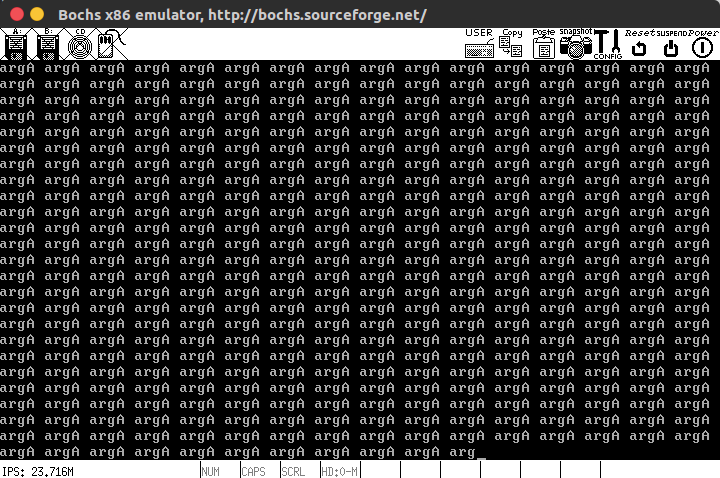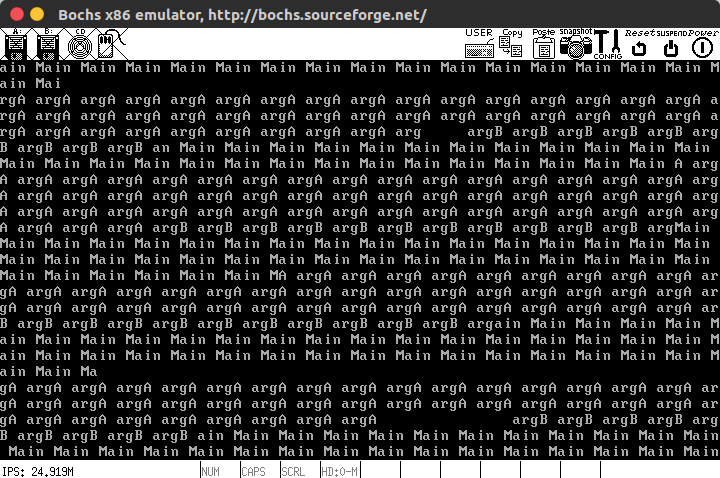1
2
3
4
5
6
7
8
9
10
11
12
13
14
15
16
17
18
19
20
21
22
23
24
25
26
27
28
29
30
31
32
33
34
35
36
37
38
39
40
41
42
43
44
45
46
47
48
49
50
51
52
53
54
55
56
57
58
59
60
61
62
63
64
65
66
67
68
69
70
71
72
73
74
75
76
77
78
79
80
81
82
83
84
85
86
87
88
89
90
91
92
93
94
95
96
97
98
99
100
101
102
103
104
105
106
107
108
109
110
111
112
113
114
115
116
117
118
119
120
121
122
123
124
125
126
127
128
129
130
131
132
133
134
135
136
137
138
139
140
141
142
| #include "thread.h"
#include "stdint.h"
#include "string.h"
#include "global.h"
#include "debug.h"
#include "interrupt.h"
#include "print.h"
#include "memory.h"
#include "list.h"
#define PG_SIZE 4096
struct task_struct* main_thread;
struct list thread_ready_list;
struct list thread_all_list;
static struct list_elem* thread_tag;
struct task_struct* running_thread() {
uint32_t esp;
asm ("mov %%esp, %0" : "=g" (esp));
return (struct task_struct*)(esp & 0xfffff000);
}
static void kernel_thread(thread_func* function, void* func_arg) {
intr_enable();
function(func_arg);
}
void thread_create(struct task_struct* pthread, thread_func function, void* func_arg) {
pthread->self_kstack -= sizeof(struct intr_stack);
pthread->self_kstack -= sizeof(struct thread_stack);
struct thread_stack* kthread_stack = (struct thread_stack*)pthread->self_kstack;
kthread_stack->eip = kernel_thread;
kthread_stack->function = function;
kthread_stack->func_arg = func_arg;
kthread_stack->ebp = kthread_stack->ebx = kthread_stack->esi = kthread_stack->edi = 0;
}
void init_thread(struct task_struct* pthread, char* name, int prio) {
memset(pthread, 0, sizeof(*pthread));
strcpy(pthread->name, name);
if (pthread == main_thread) {
pthread->status = TASK_RUNNING;
} else {
pthread->status = TASK_READY;
}
pthread->self_kstack = (uint32_t*)((uint32_t)pthread + PG_SIZE);
pthread->priority = prio;
pthread->ticks = prio;
pthread->elapsed_ticks = 0;
pthread->pgdir = NULL;
pthread->stack_magic = 0x19870916;
}
struct task_struct* thread_start(char* name, int prio, thread_func function, void* func_arg) {
struct task_struct* thread = get_kernel_pages(1);
init_thread(thread, name, prio);
thread_create(thread, function, func_arg);
ASSERT(!elem_find(&thread_ready_list, &thread->general_tag));
list_append(&thread_ready_list, &thread->general_tag);
ASSERT(!elem_find(&thread_all_list, &thread->all_list_tag));
list_append(&thread_all_list, &thread->all_list_tag);
return thread;
}
static void make_main_thread(void) {
main_thread = running_thread();
init_thread(main_thread, "main", 31);
ASSERT(!elem_find(&thread_all_list, &main_thread->all_list_tag));
list_append(&thread_all_list, &main_thread->all_list_tag);
}
void schedule() {
ASSERT(intr_get_status() == INTR_OFF);
struct task_struct* cur = running_thread();
if (cur->status == TASK_RUNNING) {
ASSERT(!elem_find(&thread_ready_list, &cur->general_tag));
list_append(&thread_ready_list, &cur->general_tag);
cur->ticks = cur->priority;
cur->status = TASK_READY;
} else {
}
ASSERT(!list_empty(&thread_ready_list));
thread_tag = NULL;
thread_tag = list_pop(&thread_ready_list);
struct task_struct* next = elem2entry(struct task_struct, general_tag, thread_tag);
next->status = TASK_RUNNING;
switch_to(cur, next);
}
void thread_init(void) {
put_str("thread_init start\n");
list_init(&thread_ready_list);
list_init(&thread_all_list);
make_main_thread();
put_str("thread_init done\n");
}
|

